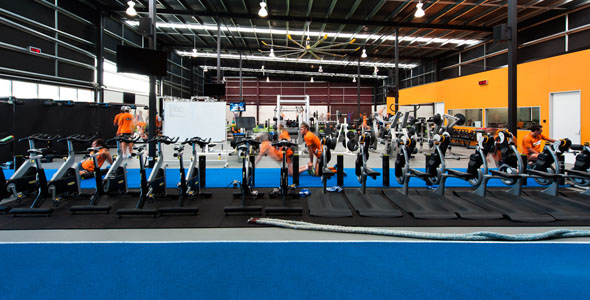A Unique Perspective on What Works in Elite Training Facilities – Populous
February 16, 2016
By Populous’ Richard Breslin and Al Baxter
As sports science and technology advance, and the value attached to the world’s most in-demand players increases, across a range of sports, so too does demand for elite training facilities to accommodate them.
The Populous team, across the globe, has been designing elite training hubs for three decades, helping to create some of the sporting world’s most complex and futuristic spaces.
Many members of our architectural team are also former professional athletes, making them uniquely qualified to meet the needs of today’s elite competitors.
We’ve recently welcomed architect, Al Baxter to that team. He was the most capped prop in the history of Australian rugby at his retirement from the sport in 2011.
Here Al talks about the complexities, and benefits, of creating spaces where athletes can develop and excel……
It was the mid-90s when I first began playing first-grade rugby in Australia.
Back then, elite rugby training only involved using the field or weights set up at the back of the grandstand; using the equipment at the local gym was about as ‘elite’ as things got.
Our counterparts at the State and National Institutes of Sport, Olympic athletes, had facilities that would be considered high-performance.
Team sports, in Australia, just weren’t there yet. However, spin the globe and it was a different story.
The Populous team began working on elite training facilities in the U.K. and U.S. as early as 1983.
The English Premier League, and in America the NFL and thriving college sports, were leaders in advancing the environments in which their best players could train.
In the late 1990s, thanks largely to a surge in funding from TV rights and sponsorship, Australia joined the fray.
Fast forward to 2016, and numerous codes, across Europe, the U.S. and Australia are developing exceptional training spaces.
Team and club owners and managers have acknowledged the effect first-class facilities can have on athletes’ physical performance, mental wellbeing, and, hence, team win rates.
The flow-on effect has been realised – athletes in peak condition, and clubs with a competitive edge, attract interest from other high quality players and coaching staff.
Ensuing financial benefits – increases in sponsorship, membership and brand value – have made investing in elite training facilities all the more attractive for clubs wanting to be competitive.
So what exactly makes a facility ‘elite’?
The latest in medical and nutrition resources, recovery and rehabilitation rooms and equipment, high-tech performance-analysis capabilities, dedicated education and commercial spaces… they’re all facets of a high-performance centre.
But what truly makes a facility elite is the seamless integration of these features.
Having a deep understanding of how teams operate, allows us to design facilities that provide this integration between all these multiple elements.
Access from the medical room directly into hydrotherapy or physiotherapy, or meeting rooms with separate areas designed for smaller groups, are simple examples.
However it’s the design of spaces that allows the organisation to come together, when appropriate, that can really make a huge difference to a team’s culture.
Facilitating connections between Firsts teams and lower-grade or academy teams, provides inspiration for up-and-coming players and cements all-important elite pathways whilst also pushing those in the top team in the knowledge that there are hard-working ambitious younger players biting at their heels.
Good design and integration is also key in preventing an ‘us and them’ mentality between players and administration.

